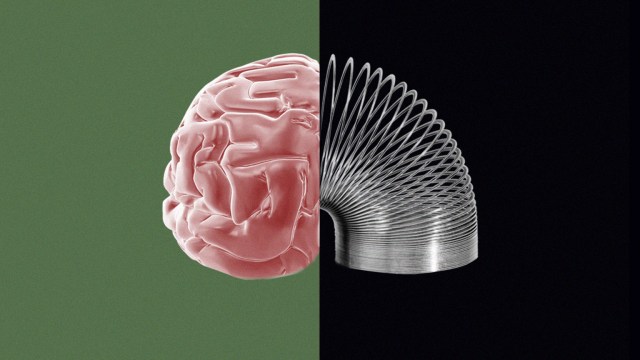Why China, Russia, and other autocracies may wield an AI advantage in global cyberwars

- In his new book, The Wires of War: Technology and the Global Struggle for Power, Jacob Helberg outlines the future of cyberwarfare between Western democracies and autocracies like China and Russia.
- As a senior adviser at the Stanford University Center on Geopolitics and Technology, Helberg proposes that artificial intelligence is a key weapon in “Gray War,” his term for the global battle between democracy and autocracy.
- In this excerpt, Helberg explores some of the advantages that autocracies may have in cyberwarfare.
The following is an excerpt from The Wires of War: Technology and the Global Struggle for Power, written by Jacob Helberg. This excerpt was published with permission from the author.
In May 2014, a Hong Kong venture capital firm called Deep Knowledge Ventures appointed a new member to its board of directors. Like the five existing board members, this new director was steeped in the science of health care and aging, the firm’s core areas of investment. Like the others, the newest Deep Knowledge board member got to vote on whether to invest in a given company.
But there was one big difference between the five existing board members and Deep Knowledge Venture’s latest addition—the new board member was an algorithm. The algorithm’s name was VITAL, short for “Validating Investment Tool for Advancing Life Sciences.” And VITAL’s advanced capabilities made it—you might say—rather vital. Scrutinizing financing, intellectual property, and clinical trial results, VITAL used artificial intelligence to examine prospective companies much like a human board member. Ultimately, the venture firm credits VITAL’s investment insights with helping them avoid bankruptcy. Even better, VITAL had no need to eat, sleep, or charge anything to the corporate AmEx card.
Most tech firms have not yet appointed AI to their boards. But many are racing to integrate AI into their products, projections, and business models. AI powers self-driving cars and suggests movies we might like on Netflix. The Associated Press has used AI to draft basic articles. IBM’s Watson beat two of Jeopardy!’s greatest contestants and, for good measure, identified genes linked to degenerative illness. In June 2020, the San Francisco company OpenAI’s GPT-3 sent shock waves across the tech industry, proving it possible to algorithmically generate cogent and naturally sounding long-form text on almost any topic. The consulting firm PwC estimates that artificial intelligence will contribute an additional $15.7 trillion to global economic growth by 2030. That’s bigger than China’s entire economy today.
AI has been studied, in some form, for the better part of three-quarters of a century. But the recent explosion in AI applications has been driven by major advances in what’s known as machine learning, which, as the AI expert Pedro Domingos puts it, “automates automation itself.” Key to these machine learning advances is “deep learning,” powered by “neural networks.” In essence, these neural networks mimic how our brains function. Take the process of identifying the image of a cat. In the past, an engineer might have meticulously spelled out certain rules: two triangles on top of a circle likely means “cat.” With deep learning, however, you’d set a neural network loose on an immense dataset of millions of images labeled “cat” or “no cat” and allow the algorithm to puzzle out patterns for itself. (Neural networks have yet to learn to generate good names for cats, however. One such experiment yielded distressing suggestions like “Peanutbutterjiggles,” “Dr. Fart,” and the utterly terrifying “Bones of the Master.”)
Naturally, a technology this transformative won’t be confined to ferreting out furry felines—not if the world’s autocrats have their way. In 2018, a consortium of AI scholars produced a report, “The Malicious Use of Artificial Intelligence”; it runs for ninety-nine pages. With good reason, the Department of Defense has stood up a Joint Artificial Intelligence Center to “harness the game-changing power of AI.” What steel was to medieval combat, artificial intelligence is to the Gray War.
In 2017, while Silicon Valley and Washington were coming to grips with what had unfolded in the last cyber battle a year prior, Russia’s president had his eye on the next one. “Artificial intelligence is the future, not only for Russia, but for all humankind,” Putin said. “Whoever becomes the leader in this sphere will become the ruler of the world.” That same year, China’s State Council published a “Development Plan for a New Generation of Artificial Intelligence,” laying out steps for China to become the world lead in AI by 2030.
To reach that goal, Beijing has mobilized aggressively. China’s Tencent and Alibaba have set up AI research hubs in Seattle and Silicon Valley, aggressively recruiting top researchers from Google, Microsoft, and Amazon. While some American politicians hem and haw about “picking winners and losers,” the Chinese government offers generous subsidies and other incentives to jump-start homegrown AI growth. Chinese municipalities have begun laying out routes for driverless vehicles and integrating facial recognition into public transit. The eastern Chinese city of Nanjing has invested nearly half a billion dollars to create an AI training institute, lure talented researchers, and streamline the process of launching a company. Apartments have been set aside for employees of AI start-ups; the children of top executives receive sought-after spots at prestigious local schools.
China’s investment appears to be paying off. Of the “Seven Giants” of AI—Google, Facebook, Amazon, Microsoft, Baidu, Alibaba, and Tencent—three are Chinese. Between 2007 and 2017, Chinese output of government-funded AI academic papers grew a staggering 400 percent. Notably, these Chinese AI papers are increasingly being cited by other researchers as well, presumably indicating that they are producing high-quality work (though it could also just mean more Chinese researchers citing fellow Chinese researchers). Kai-Fu Lee, the Taiwanese-American AI guru, notes, “When asked how far China lags behind Silicon Valley in artificial intelligence research, some Chinese entrepreneurs jokingly answer ‘sixteen hours’—the time difference between California and Beijing.” In Lee’s estimation, China is becoming “a bona fide AI superpower, the only true national counterweight to the United States in this emerging technology.”
Yet the ability to marshal massive resources to achieve AI dominance isn’t the autocrats’ only advantage. It’s also the data. Artificial intelligence is comprised of three elements—data, algorithms, and computing power. More and better data lets you train better algorithms. With a big enough data advantage, even middling algorithms can outstrip the cutting-edge ones. Partly for this reason, Eric Rosenbach and Katherine Mansted, of Harvard’s Belfer Center, write that information “is now the world’s most consequential and contested geopolitical resource,” with many countries believing “that they are in a zero-sum race to acquire and use data.”
Authoritarians—and China in particular—are uniquely positioned to win that race. Historically, totalitarian regimes have compiled reams of data on the people they control. Recall the extensive records amassed by the KGB in East Germany, and a young Vladimir Putin frantically burning them. By the time the Berlin Wall fell, the East German Stasi had amassed so many files on its citizens— documents, photos, recordings—that its archives would have extended nearly seventy miles. But even the Stasi couldn’t have dreamed of the surveillance power of the Chinese state.
Thanks to a proliferation of “online to offline” services—such as ride-hailing, bike-sharing, and food delivery—and the widespread adoption of mobile payment technology, Chinese companies have access to a trove of data that is both mind-bogglingly vast and incredibly detailed. In China, beggars display QR codes for Alipay and WeChat donations. One Chinese bike-share company alone sends 20 terabytes of data to the cloud each day. Whereas U.S. tech companies possess a great deal of data on our online habits—such as our searches and “likes”—China’s tech giants know what you like to buy at the grocery store and where you get your hair done. And rather than being spread among half a dozen different apps, many of these functions are contained in a single app—Tencent’s WeChat—which began as a messaging app and has grown to become “a remote control for life.” And of course, because the country’s National Intelligence Law requires companies to “collaborate with the state intelligence,” what belongs to Chinese companies or companies based in China effectively belongs to the government.
Even more important, the Chinese government doesn’t have to bother with those pesky privacy protections that we cherish in the West. One hundred percent of Beijing’s public spaces are already covered by surveillance cameras. China is on track to install 450 million cameras around the country, part of what the Ministry of Public Safety has termed a system that is “omnipresent, completely connected, always on and fully controllable.” Xi refers to these surveillance systems by the same phrase Mao Zedong once used to encourage Chinese citizens to spy on counterrevolutionaries: “sharp eyes.” Thanks in part to millions of these sharp eyes, China—“the Saudi Arabia of data”—has leapfrogged the United States as the world’s top producer of digital information.
Here’s the bottom line: America’s autocratic adversaries are pouring astronomical resources into artificial intelligence and data collection because with it they can exert a level of political and economic control—at home and abroad—that regimes of previous eras could only imagine. Armed with increasingly advanced AI systems and never-ending data flows, these autocrats will intensify their assault on both software and hardware layers of the Internet. If democracies like the United States do not wake up to this reality, we risk a distressing future—one where we won’t be able to believe our own eyes and ears.





